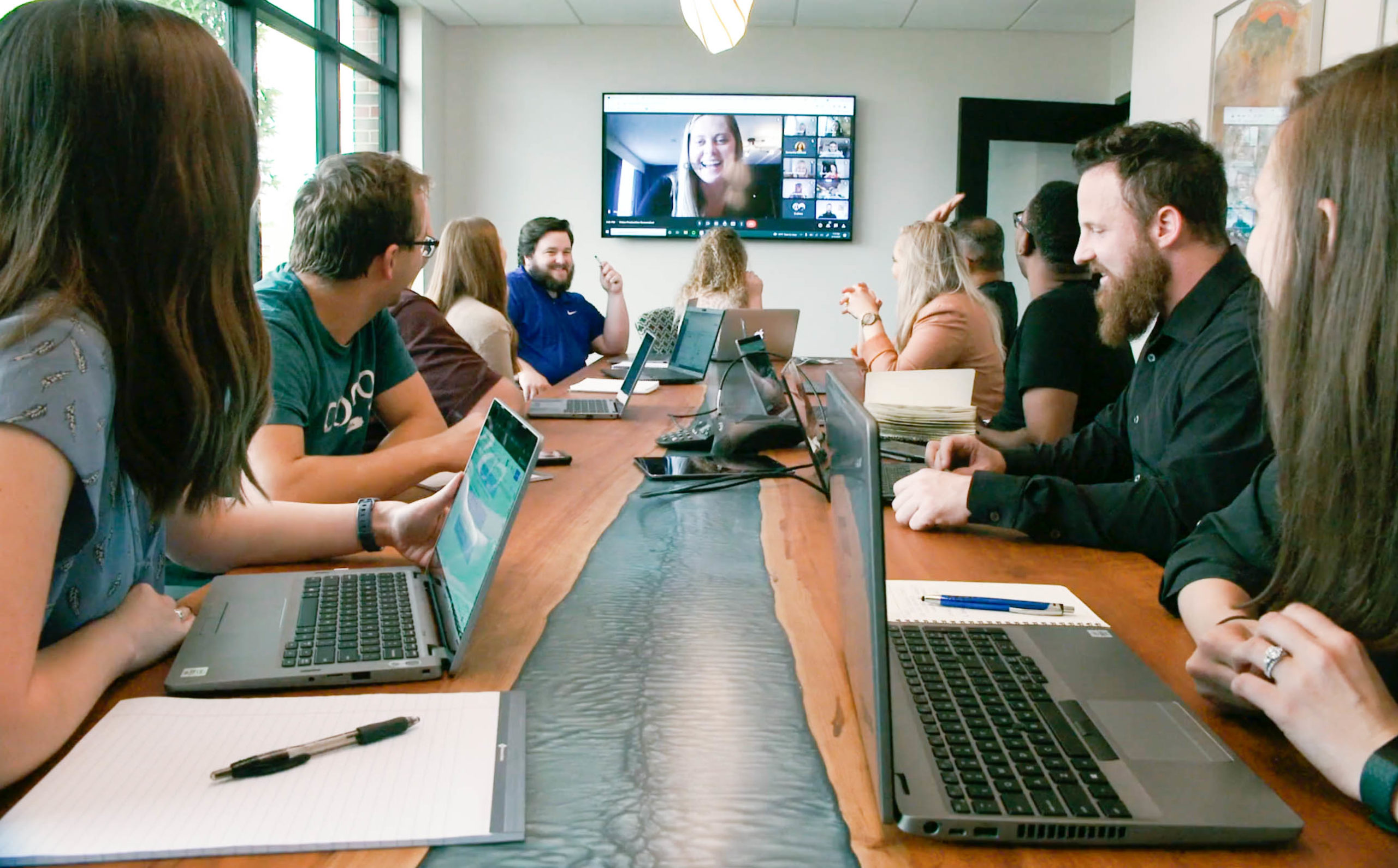Navigating Q4 Advertising Challenges in an Election Year: A Strategic Guide for Marketing Decision Makers
As Q4 approaches, marketing teams must act swiftly to prepare for one of the most challenging periods of the year. This quarter, already notorious for increased competition and rising advertising costs, is further complicated by the pressures of an election year. Early preparation and proactive conversations with clients and partners are essential to secure the necessary resources and ensure your campaigns stand out in a cluttered marketplace. Without taking these steps, you risk being outpaced by competitors and missing key opportunities. To help you navigate these complexities and execute a successful Q4 advertising strategy, we’ve compiled expert insights across our departments at Coegi.
Challenge 1: Increased Ad Costs and Cluttered Marketplace
In Q4, advertising costs typically soar, driven by heightened demand from brands eager to capture consumer attention during the holiday season. The upcoming election amplifies this pressure, as political campaigns flood ad spaces, making it even more challenging for brands to make an impact.
Our Advice:
- Use Historical Data Wisely: While it’s essential to look at past performance to set benchmarks, data from previous years might not fully capture the dynamics of an election year. Instead, refer to 2020 data where possible, and adjust for inflation to set more accurate expectations. This approach will help you budget effectively without underestimating the cost surges.
- Tailored Creativity: The marketplace will be cluttered with ads, both commercial and political. To cut through the noise, it’s crucial to tailor your creative assets to resonate with your target audience. Personalization and relevance are key—ensure that your messaging is sharp and speaks directly to the consumer’s needs and desires at this time of year.
- Fraud Prevention: The political season is often associated with increased ad fraud. To protect your budget and ensure that your ads reach genuine audiences, implementing robust fraud prevention measures is essential. Without these precautions, your ad spend could be wasted on fraudulent traffic, reducing the overall effectiveness of your campaigns.
Challenge 2: Inventory Shortages and Early Sell-Outs
One of the most pressing issues during Q4, especially in an election year, is the early sell-out of premium ad inventory. With brands and political campaigns vying for the same spaces, securing inventory becomes increasingly difficult.
Our Advice:
- Secure Inventory Early: To avoid missing out on critical ad placements, start negotiating direct partnerships and Private Marketplace (PMP) or Programmatic Guaranteed (PG) deals as early as possible. These agreements can provide you with the premium inventory you need while reducing the risk of being edged out by competitors. Early action is your best defense against the last-minute scrambles that can lead to missed opportunities.
Challenge 3: Managing Increased Workload and Risk of Errors
The fast-paced nature of Q4 often leads to increased workloads for marketing teams. With so much at stake, the risk of human errors—whether in campaign execution, budgeting, or creative adjustments—can escalate.
Our Advice:
- Leverage Project Management: Effective project management is critical during this hectic period. Our operations team emphasizes the importance of identifying potential bottlenecks and managing individual workloads to prevent burnout and mistakes. Project managers should keep a close eye on timelines and ensure that tasks are distributed evenly across the team. By maintaining a clear view of everyone’s workload, you can mitigate risks and keep campaigns running smoothly.
- Implement Automation: Automation tools are indispensable for managing time-sensitive tasks efficiently. Whether it’s setting up automated creative swaps or using platform rules to schedule out rapid changes, these technologies can save precious time and reduce the stress of manual updates. By automating repetitive tasks, your team can focus on strategic decision-making, ensuring that your campaigns remain agile and responsive throughout the quarter.
- Focus on Value: When the pressure is on and you’re unsure where to begin, always start with the task that will deliver the most value. It’s easy to get caught up in trying to complete everything to perfection, but this mindset can lead to paralysis. Remember, progress is more important than perfection. By prioritizing high-impact tasks, you can keep your team moving forward without getting bogged down in the details.
Conclusion
Q4 presents a unique set of challenges, especially during an election year. However, by understanding these obstacles and preparing accordingly, marketing decision-makers can turn potential pitfalls into opportunities for success. From anticipating higher ad costs and inventory shortages to managing workloads, preventing ad fraud, and leveraging automation, the strategies outlined above will help your brand navigate the complexities of Q4 with confidence. By adopting these insights, you’ll not only survive but thrive during this critical period, ensuring that your marketing strategy is both effective and resilient.
For personalized advice tailored to your brand’s specific needs, don’t hesitate to reach out to our team for a consultation. Let’s work together to make this Q4 your most successful yet.
Social:
Social Media Strategy for Q4: Creating Opportunities for High Engagement
Key Changes to Anticipate in Q4:
- Rising Ad Costs: Expect significant increases in CPM, CPA, and CPC metrics due to heightened competition and end-of-year spending. Many businesses push to allocate remaining budgets, driving up costs across social platforms.
- Increased Engagement Rates: The holiday season often sees a spike in social activity as consumers engage in online shopping, connect with loved ones, and participate in festive events.
Tips for Managing Q4 Social Media Strategy:
- Early Planning: Start your campaigns early to secure ad space before costs rise further. Early preparation can help you lock in more favorable rates and ensure your content is ready to go live when needed.
- Continuous Optimization: Regularly optimize your campaigns to maximize ROI. Keep a close eye on performance metrics and be ready to make adjustments as necessary.
- Budget Allocation: Allocate a larger portion of your advertising budget to Q4 to accommodate the expected cost increases. Proper budgeting is crucial for staying competitive.
- Content Strategy:
- Seasonality & Relevant Messaging: Tailor your content to reflect the season and resonate with your audience. Utilize holidays or cultural events to create a personal connection with users, increasing the likelihood of engagement.
- User Experience: Make your call-to-action (CTA) clear and prominent, ideally within the first few seconds of a video ad. Ensure the user experience is seamless and intuitive.
- Leverage AI: Utilize platform algorithms and AI capabilities to precisely target your audience. Stay ahead by testing and adopting new features, such as Meta’s Advantage+ tools, to improve your KPIs.
- Genuine Imagery: Incorporate user-generated content and influencer partnerships to create authentic connections with your audience. Genuine content is more likely to stand out and resonate.
- Diverse Ad Types: Use a variety of ad formats to capture your audience’s attention. Offering multiple content types increases your chances of engagement.
Search:
Q4 Search Strategy: Navigating Industry-Specific Trends
As we approach Q4, the search landscape becomes increasingly competitive, with trends varying significantly across different industries. Here’s what to consider when planning your search campaigns:
Anticipated CPC Trends:
- Industry Variance: CPC trends differ widely depending on the industry. For retail, expect a surge in CPCs as competition intensifies around key dates like Thanksgiving and Black Friday. Retailers often increase their budgets to capture year-end spending, driving up auction prices. Conversely, industries like financial services may experience a drop in search activity during the same period, potentially leading to lower CPCs.
- Demand-Based Channels: Search advertising is heavily influenced by consumer demand. As inflation rises and economic pressures increase, consumers may be less likely to search for high-cost or luxury items, leading to fluctuations in CPCs. The demand-based nature of search advertising means that CPCs can vary significantly depending on how willing consumers are to make purchases during this time.
- Google’s Role: There’s ongoing concern among advertisers that Google might be artificially inflating auction prices, contributing to CPC increases. While it’s difficult to pinpoint the exact impact, this is a factor worth monitoring.
Best Practices for Q4 Search Campaigns:
- Ad Copy and Keyword Adjustments:
- Seasonal Promotions: Adjust your ad copy to reflect seasonal deals and promotions, especially around key shopping events like Black Friday. Incorporating keywords related to sales and promotions can help capture more traffic.
- Action-Oriented Messaging: As search terms become more intent-based towards the end of the year, ensure your ad copy includes strong calls to action that align with consumer purchasing behavior. Refresh your ad copy to reflect holiday themes and urgent calls to action. Highlight promotions, limited-time offers, and unique selling points to stand out in search results.
- Ad Extensions: Utilize all relevant ad extensions, such as sitelinks, callouts, and structured snippets, to provide additional information and increase your ad’s visibility and click-through rate.
- Budget Allocation:
- Flexible Budgeting: Expect higher CPCs, especially in industries where competition peaks in Q4. Allocate your budget accordingly, ensuring you can compete effectively during high-demand periods.
- Industry-Specific Strategies: Tailor your budget and bidding strategies based on industry trends. For example, healthcare might see an uptick in competition as insurance companies ramp up their Q4 campaigns.
- Keyword Strategy:
- Focus on High-Intent Keywords: Prioritize keywords that indicate strong purchase intent, particularly those related to holiday shopping and seasonal events. This will help capture consumers who are closer to making a purchase. Consider increasing your budget for branded keywords as competition rises.
- Negative Keywords: Use negative keywords strategically to filter out irrelevant traffic and reduce wasted spend. This is especially important during high-competition periods to ensure your budget is used efficiently.
Programmatic:
Programmatic Strategy for Q4: Optimizing for a High-Competition Landscape
Key Changes to Anticipate in Q4:
- Increased Costs: The competition for ad inventory intensifies, leading to higher CPCs and CPAs due to increased demand.
- Shift in Consumer Behavior: Consumers are actively searching for holiday deals and making purchase decisions, which means higher intent traffic but also requires more sophisticated targeting and messaging.
Tips for Managing Q4 Search Strategy:
- Budget and Bidding Adjustments:
- Flexible Bidding: Implement flexible bidding strategies to adapt to real-time changes in the competitive landscape. Utilize automated bidding tools to maximize efficiency and ensure your ads appear in high impact when it matters most.
- Budget Allocation: Allocate more budget to high-performing, high-precision targeting segments and adjust your spend throughout the quarter based on performance data. Also consider exploring emerging channels and tactics where there may be a higher volume of whitespace.
- Planning for the Political Season:
- Inventory Scarcity: Be prepared for potential inventory shortages and increased costs due to political campaigns. Adjust your bids and targeting to avoid overspending during peak political ad periods.
- Geographic Targeting: Fine-tune your geo-targeting to focus on areas less impacted by political ad spend. This can help maintain efficiency and reduce competition for your target audience.
- Monitoring Market Dynamics:
- Inflationary Pressures: Keep an eye on how economic factors like inflation are impacting consumer behavior. In markets where consumers are less willing to spend, you might see reduced competition and potentially lower CPCs, which could present an opportunity to adjust your strategy.
- Post-Holiday Analysis:
- Data-Driven Insights: After Q4, conduct a thorough analysis of your programmatic campaigns to identify key trends and insights. Use this data to refine your strategy for the upcoming year, ensuring continuous improvement and optimization.






